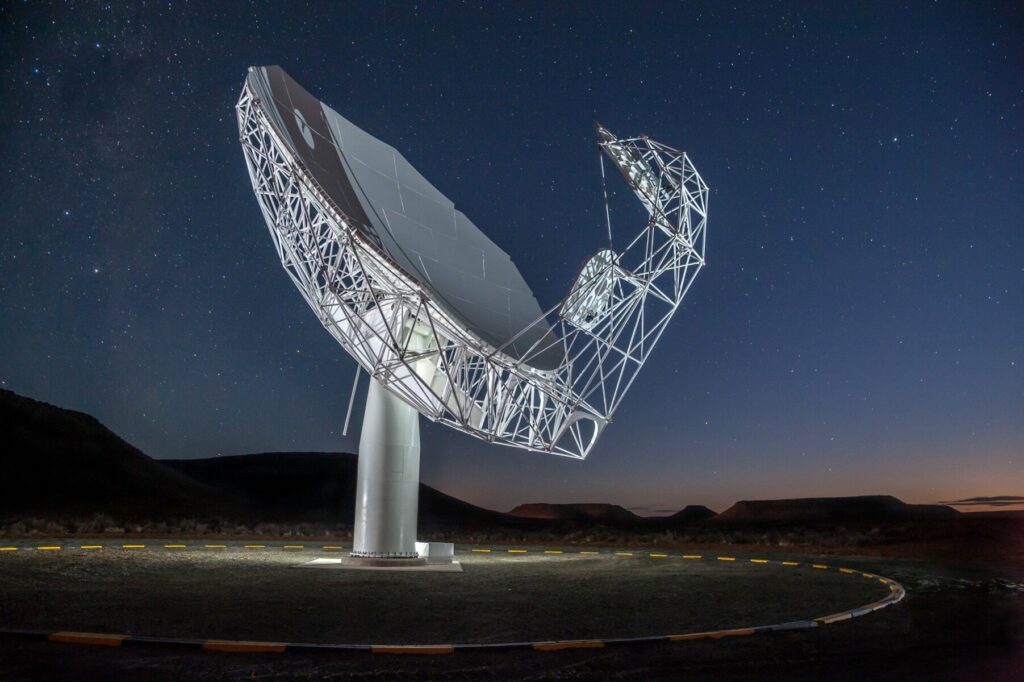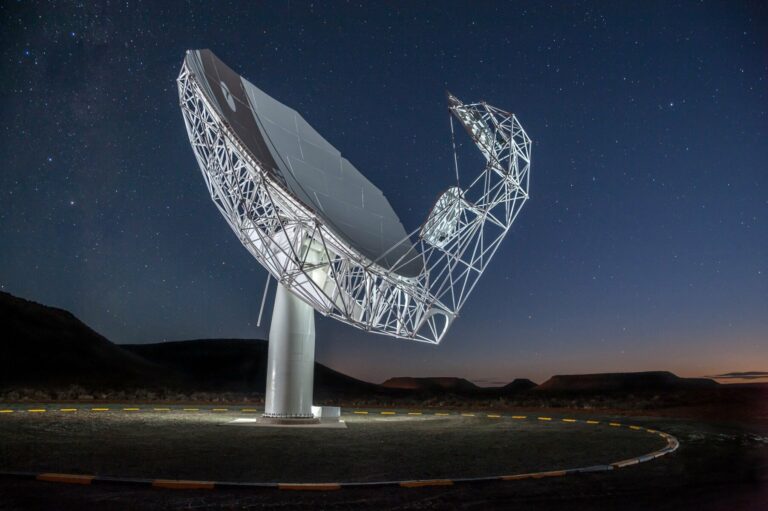Radio Astronomers Uncover Eight Newly Detected Millisecond Pulsars
A team of astronomers has made a significant discovery using South Africa’s MeerKAT radio telescope. They have found eight millisecond pulsars, which are neutron stars that spin incredibly fast, within dense clusters of stars called “globular clusters.” This discovery marks the first time that pulsars have been detected using the MeerKAT antennas. The findings have been published in a paper in the Monthly Notices of the Royal Astronomical Society, thanks to the collaborative efforts of two international groups, TRAPUM and MeerTIME.
Millisecond pulsars are fascinating objects in the universe. They are incredibly compact, consisting mainly of neutrons, and are known to be the most extreme stars. Despite their small size, they contain hundreds of thousands of times the mass of the Earth within a sphere that is approximately 24 kilometers in diameter. These pulsars spin at a remarkable rate of hundreds of rotations per second and emit a beam of radio waves that can be detected by observers, similar to a lighthouse. The formation of these objects is particularly common in the star-rich environments found at the centers of globular clusters.
Professor Ben Stappers, co-PI of the TRAPUM project and affiliated with The University of Manchester, expresses his excitement about the discovery. He believes that this finding demonstrates the potential for uncovering a large number of new millisecond pulsars in globular clusters using the exceptional MeerKAT telescope. Additionally, it provides a glimpse into what will be achievable with the Square Kilometer Array telescope, of which MeerKAT is one of the precursors.

Alessandro Ridolfi, a post-doctoral research fellow at INAF and MPIfR, stated that the MeerKAT antennas were directed towards nine globular clusters, resulting in the discovery of new pulsars in six of them. Out of these new pulsars, five are in orbit around another star. One of these pulsars, named PSR J1823-3021G, is of particular interest due to its highly elliptical orbit and massive companion. Ridolfi suggests that this system may have formed through an exchange of partners, where the original partner was expelled and replaced by a new companion star.
Tasha Gautam, a doctoral researcher at the MPIfR in Bonn and co-author of the paper, explains that this specific pulsar could have a high mass, potentially exceeding twice the mass of the sun. Alternatively, it could be the first confirmed system consisting of a millisecond pulsar and a neutron star. If confirmed through further observations, this millisecond pulsar would provide a valuable platform for studying fundamental physics.
It is important to note that the discovery of these eight new pulsars is just the beginning. The observations leading to their identification utilized only 40 of the MeerKAT 64 antennas and focused solely on the central regions of the globular clusters.
The TRAPUM collaboration, led by Professor Stappers from The University of Manchester and Professor Kramer from MPIfR/UoM, is one of the approved Large Survey Proposals (LSP) utilizing the MeerKAT telescope. TRAPUM aims to search for pulsars and transients using the exceptional sensitivity of MeerKAT. Among the areas of exploration are Globular Clusters. This discovery was made in collaboration with MeerTIME, another MeerKAT LSP, which provided the necessary infrastructure for data capture.
The TRAPUM collaboration utilized this work as a testbed to enhance the planning of the ongoing globular cluster pulsar survey. This survey, which is currently in progress, utilizes all 64 dishes to increase sensitivity. By broadening the search to numerous globular clusters and surveying their outer regions, the survey aims to gather a wider range of data.
MeerKAT, operated by SARAO, stands as the largest radio telescope in the Southern hemisphere and serves as one of the two precursor instruments for the SKA Observatory in South Africa. Situated in the Karoo desert, the radio telescope will soon undergo expansion with the addition of 20 dishes, resulting in a total of 84 antennas and the establishment of “MeerKAT+”. This expansion will be gradually integrated into the initial phase of the SKAO project, which is set to commence construction soon and continue until 2027. The initial scientific observations using MeerKAT+ are anticipated to commence as early as 2023, during the telescope’s testing phases.
This article is republished from PhysORG under a Creative Commons license. Read the original article.
Do not forget to share your opinion with us to provide you with the best posts !




0 Comments